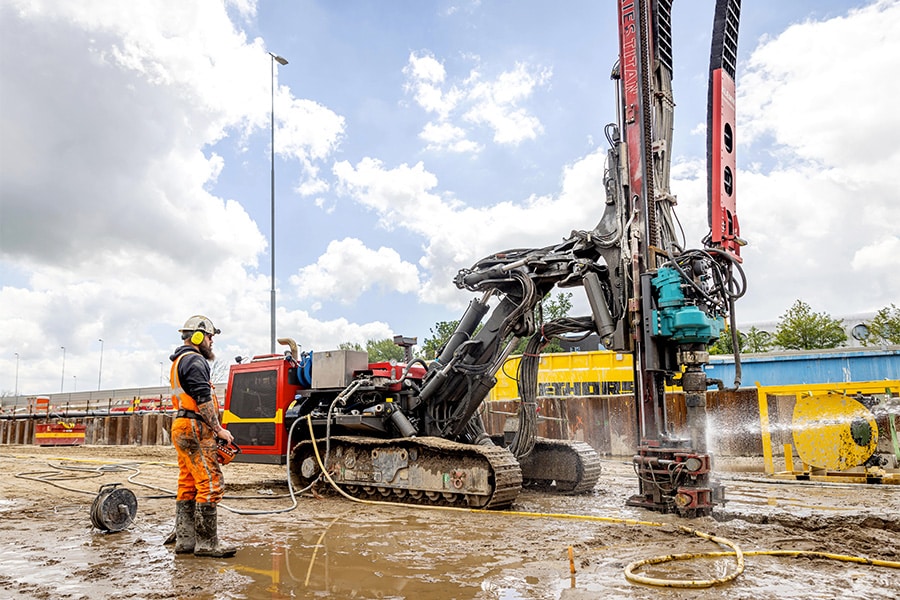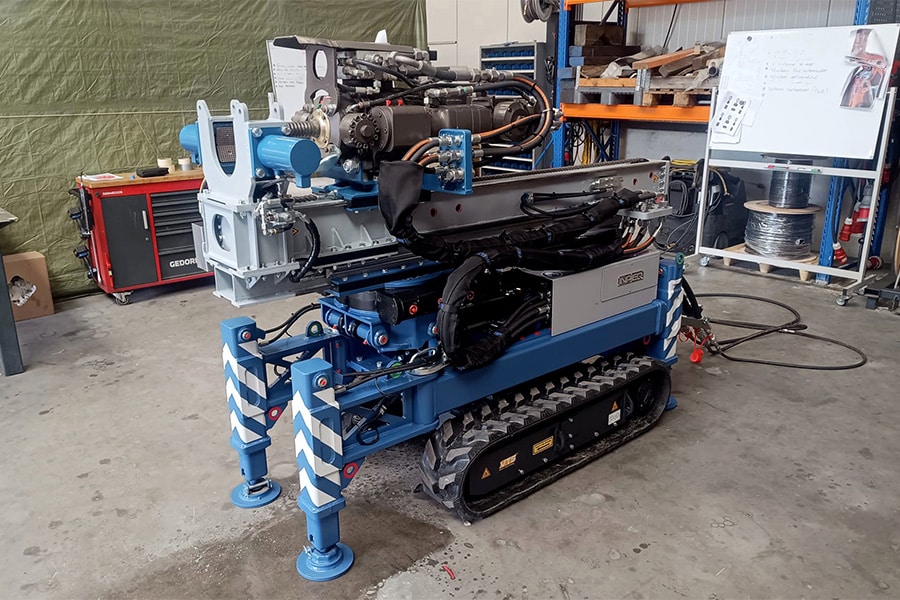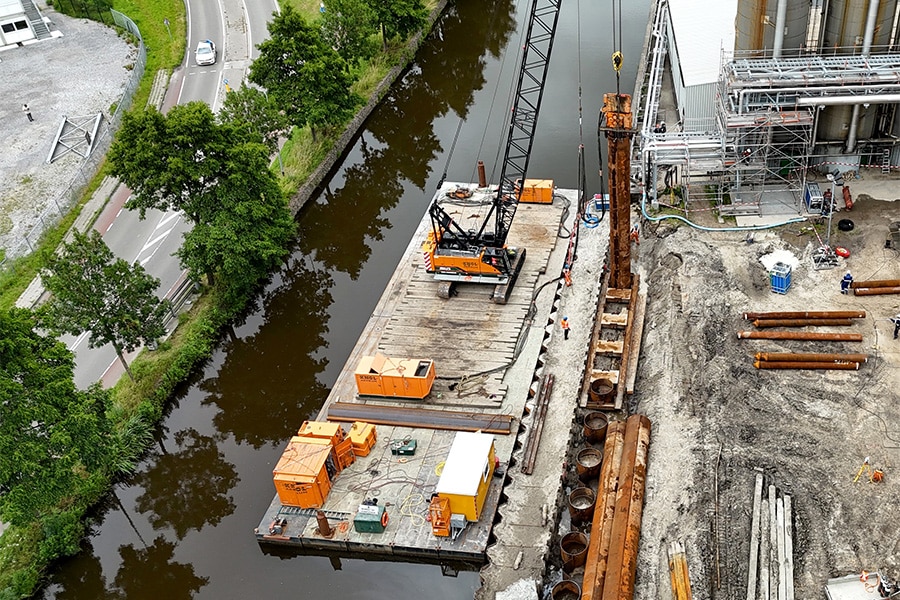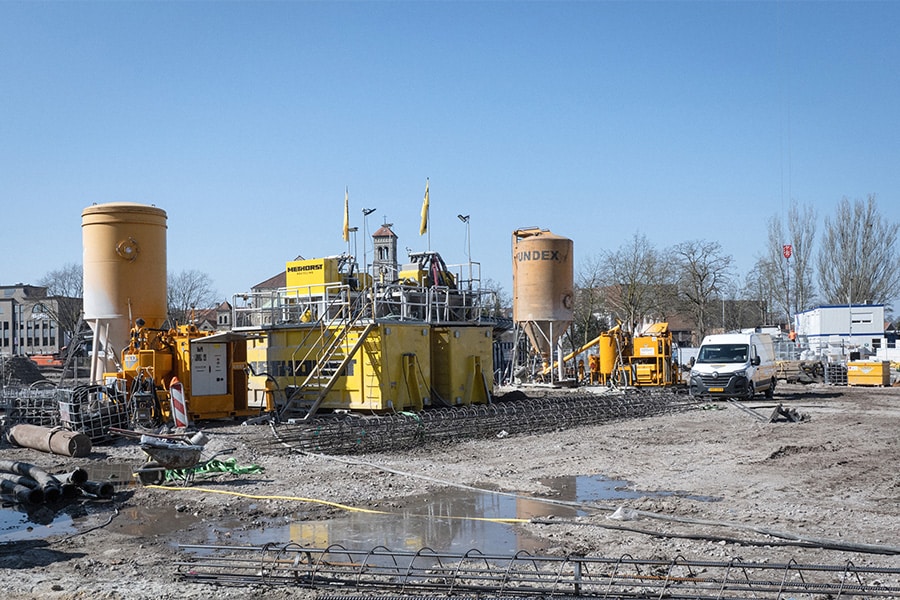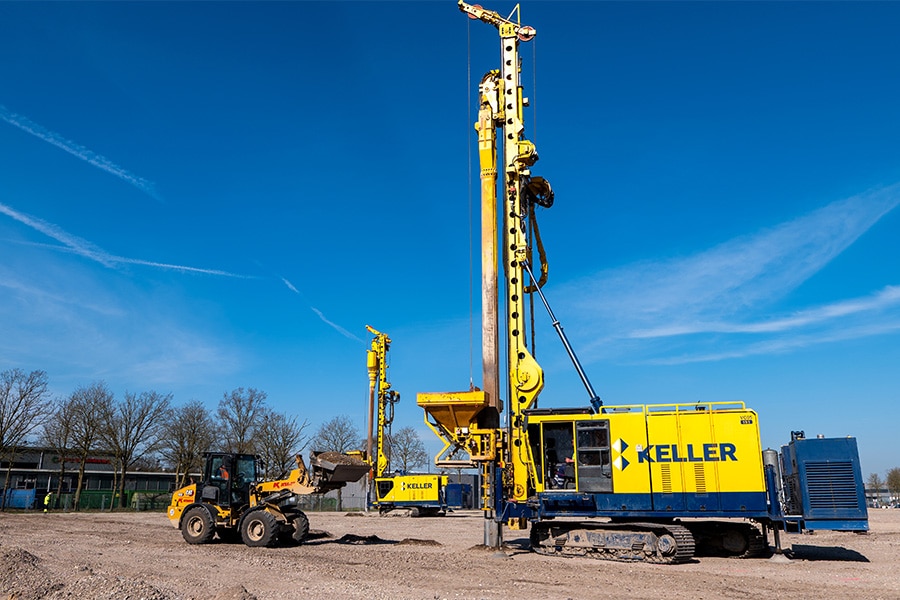
Gravel columns as a proven durable foundation
In the Netherlands, foundation on piles is the norm, but gravel columns are a more sustainable alternative that is widely used around the world and is also becoming more widely known here. And there is a good reason for that. Keller Funderingstechnieken is a specialist in this foundation technique and recently realized the foundation for a 74,000 m² warehouse on the EVO Park in Weert. The CO2 emissions saved as a result are truly gigantic.
The new warehouse is a development of the German company Goldbeck, which has had representation in the Netherlands since 2017. "In Germany, we have been working together for years and the application of gravel columns is an appropriate method," says Marcel Mertens of Keller Funderingstechnieken. "Our first joint Dutch project was a distribution center in Emmen. Because the municipality was not yet familiar with gravel columns at that time, we carried out extensive testing and test loads. That convinced them of the technique."
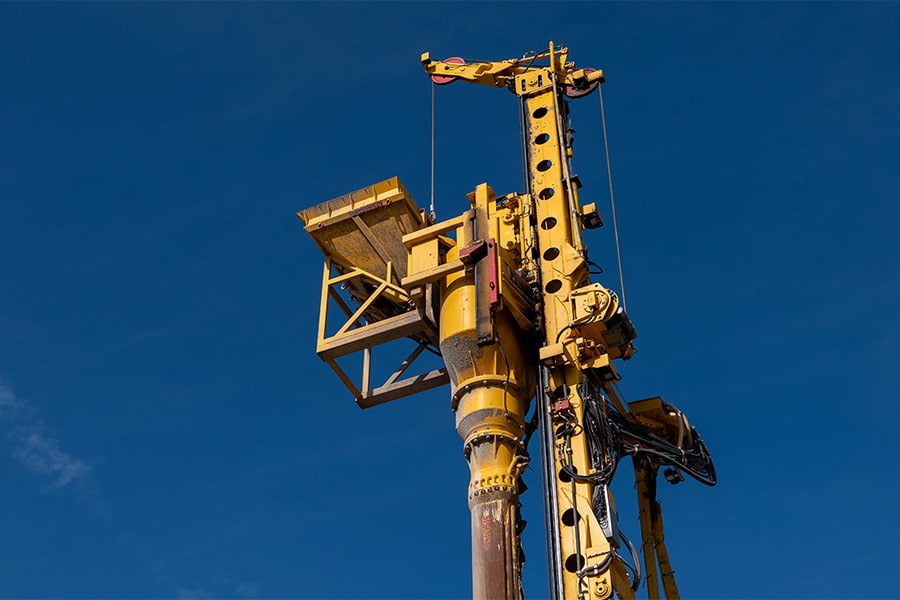
10,000 gravel columns
In Weert, too, the subsoil proved very suitable for the application of gravel columns. "Soil improvement was necessary, but the traditional exchange of soil costs a lot of material and transport, causes CO2 emissions and nuisance, and requires a substantial investment," Mertens explains. "Gravel columns are then a more attractive option." Goldbeck chose to base both the building and the floor on gravel columns. Keller installed a total of 10,000 columns, in a center-to-center distance of 3 meters, with an average diameter of 65 cm and a depth of about 2.5 meters. Within just over two months, all gravel columns had been installed. Favorable weather and good site conditions contributed to the smooth progress. "A big advantage is that the terrain is immediately passable after placement, without obstacles or protruding parts. Goldbeck was therefore able to start prefabricated construction immediately."
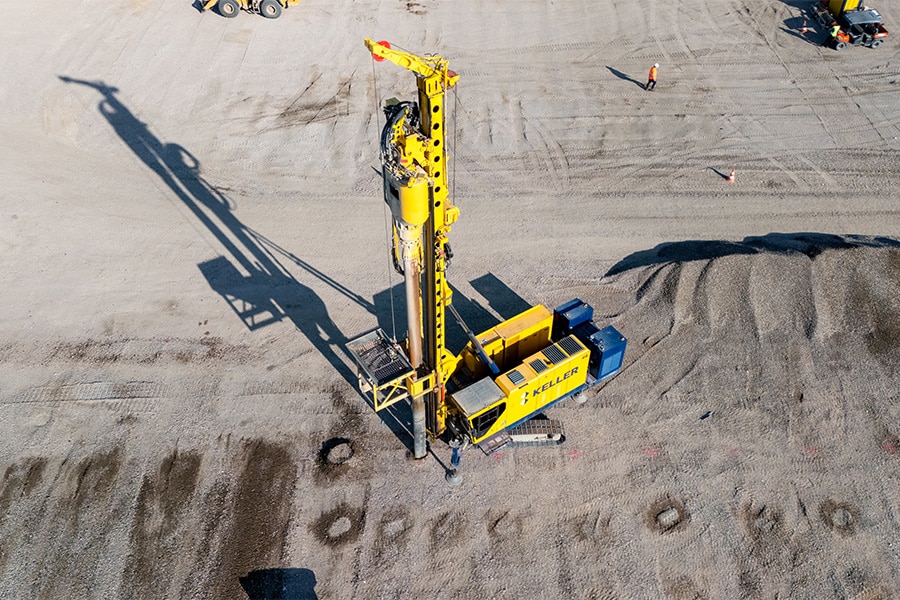
CO2 savings on multiple fronts
The gravel was sourced locally to reduce transportation distances. "It's a natural product, sourced from mining areas," says Mertens. "Unlike pile foundations, which use a lot of concrete and cement, our emissions are minimal. Other than transportation, it only comes from the machines that apply the gravel, and they run on HVO100 biofuel. So opting for gravel columns instead of pile foundations already leads to substantial CO2 savings, but running on HVO 100 goes a long way toward achieving that. The savings are really huge."
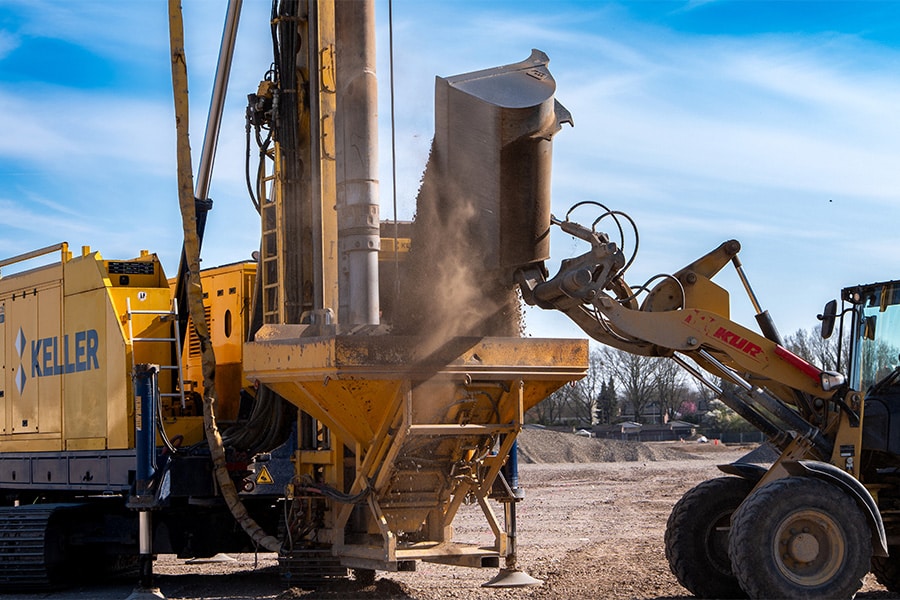
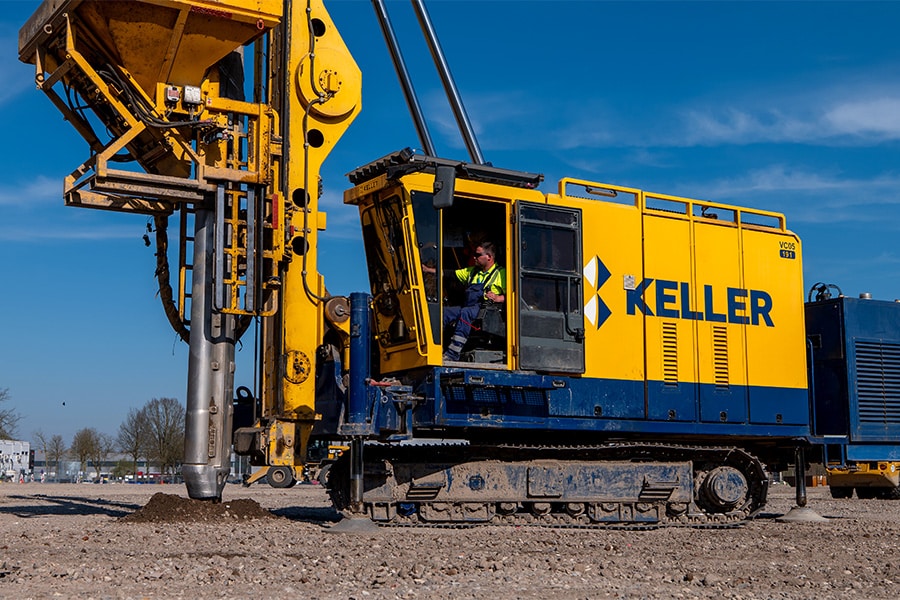
Emission-free machines
Keller builds its machines in-house and is also working on emission-free machines. "Funnily enough, we once started with electric machines, but then people found the power lines inconvenient and we switched to diesel. Now we are returning to electric because the technology is ready," Mertens assures us. With less use of materials, less transportation and minimal emissions, gravel columns are an efficient and sustainable foundation. According to Mertens, they are therefore an excellent alternative to traditional foundation methods.
Heeft u vragen over dit artikel, project of product?
Neem dan rechtstreeks contact op met Keller Funderingstechnieken B.V..
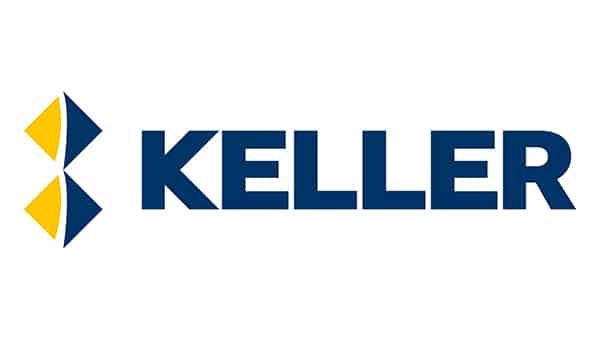 Contact opnemen
Contact opnemen
